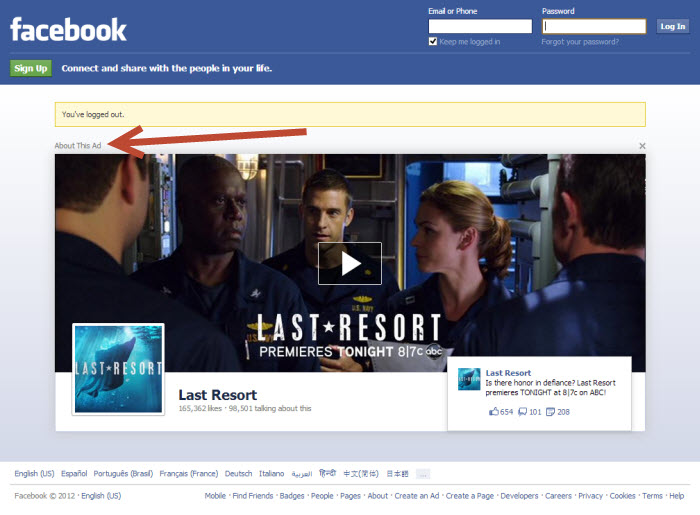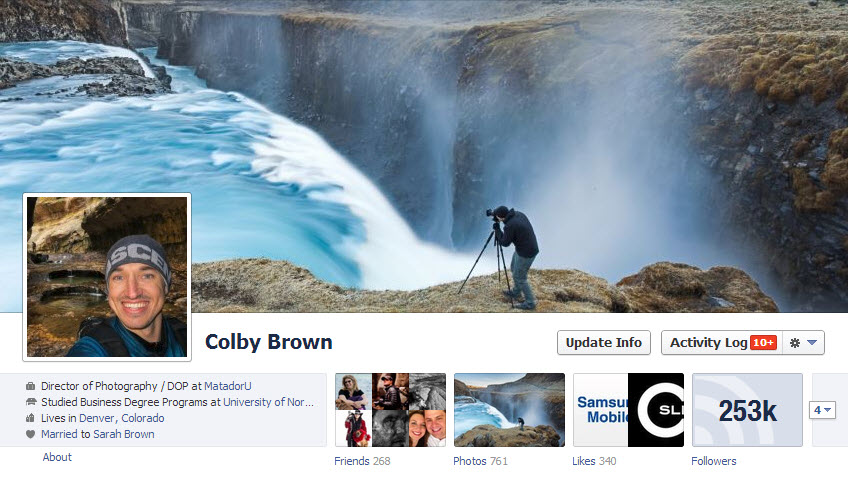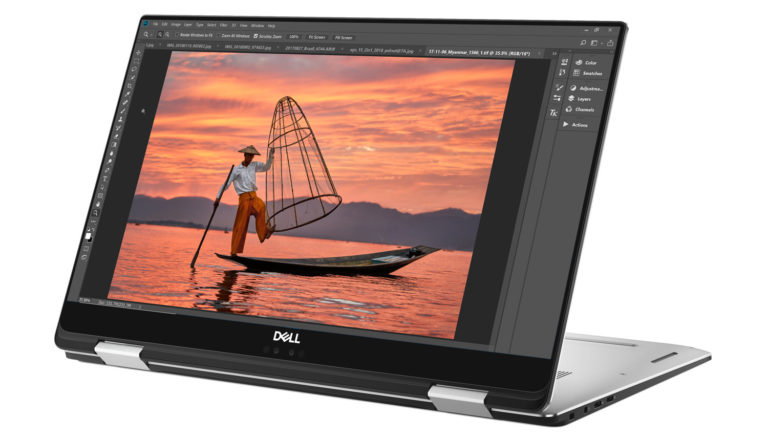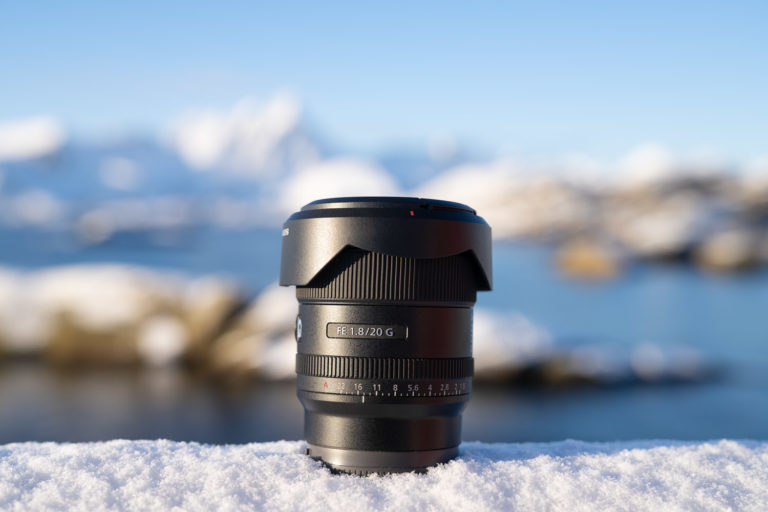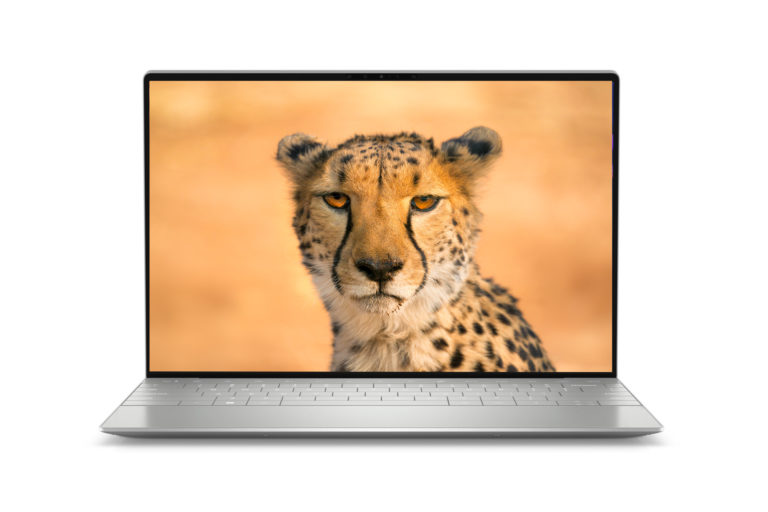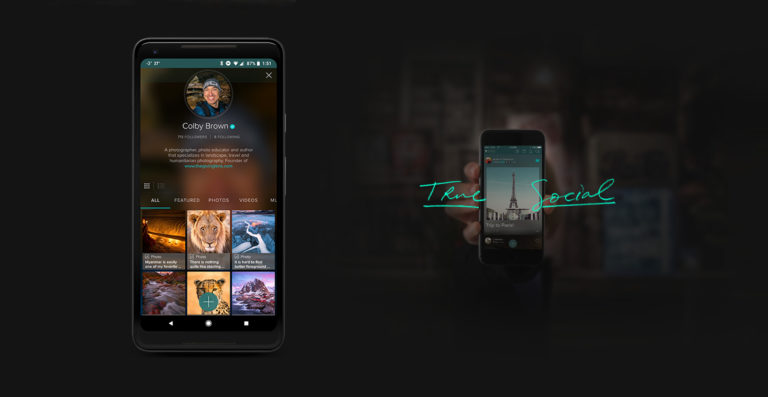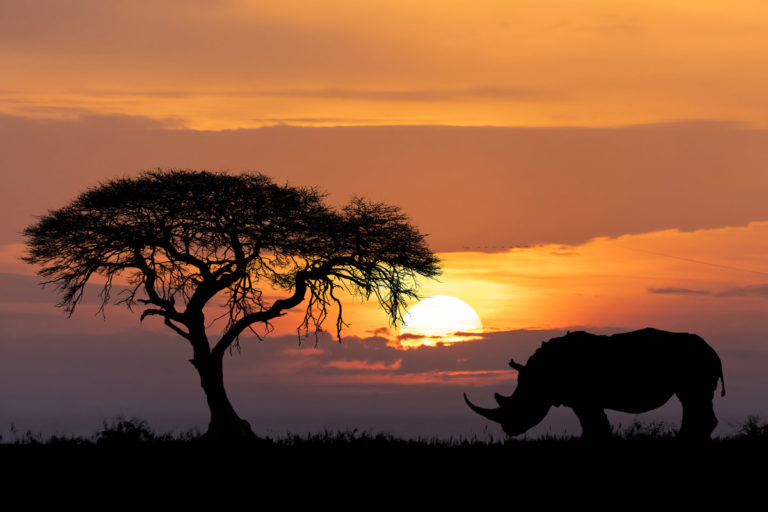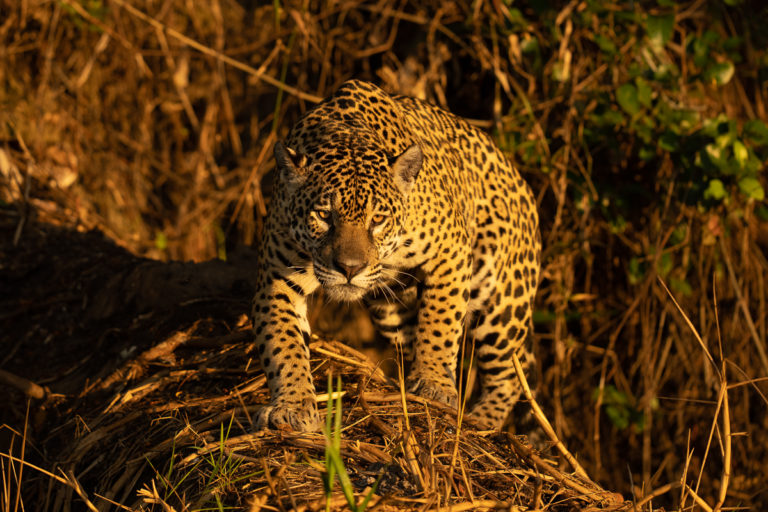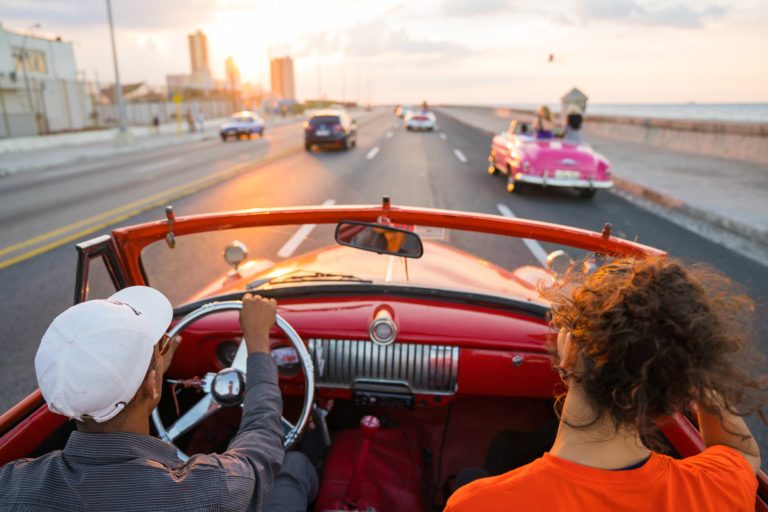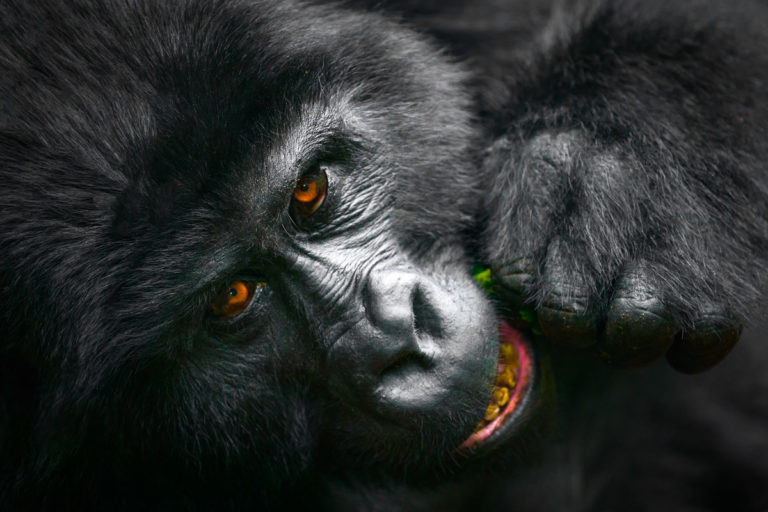 When it comes to being a photographer, there is no shortage of online networks waiting for you to share your images, interact with others and potentially grow your business. This article is part of a larger series of posts aimed at providing information and awareness for individuals looking to leverage social media and social networks in pursuit of their passion for photography. Titled, “Social Media for Photographers“, the series started as a broad overview that focused on defining many of the options a photographer has to choose from with it comes to social media. While this specific post is focused on Facebook, I have published editions that focus on Google+ and Stipple, with Twitter, Pinterest and Instagram to follow.
When it comes to being a photographer, there is no shortage of online networks waiting for you to share your images, interact with others and potentially grow your business. This article is part of a larger series of posts aimed at providing information and awareness for individuals looking to leverage social media and social networks in pursuit of their passion for photography. Titled, “Social Media for Photographers“, the series started as a broad overview that focused on defining many of the options a photographer has to choose from with it comes to social media. While this specific post is focused on Facebook, I have published editions that focus on Google+ and Stipple, with Twitter, Pinterest and Instagram to follow.
With that in mind, lets get started…
What is this Facebook that you speak of?
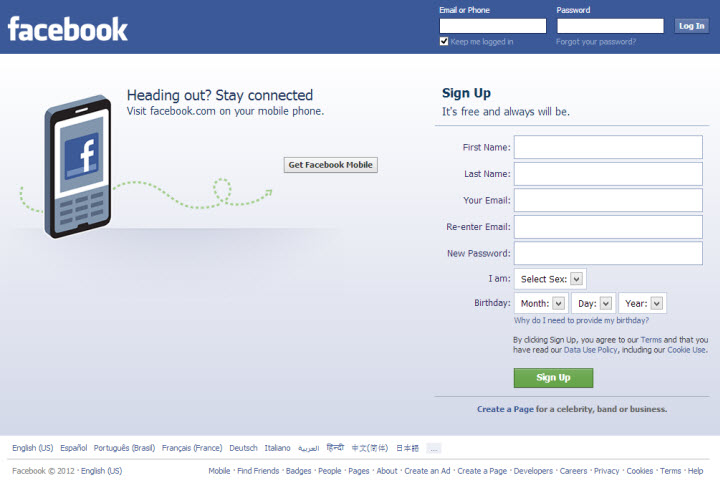
In what started out as small social platform for students at Harvard University in 2003, Facebook has become the largest social network on the planet. As of October 1st, 2012 Facebook now has over 1 billion users, according CEO Mark Zuckerberg. Through the network you can make connections, share content and join groups with users and business from all over the world.
Important Elements of Facebook
Lets talk about a few key elements of Facebook that you need to understand before you build your own social media strategy and decide where to spend your time.
It Is All About The Ads
It is worth pointing out that Faceback is at it’s core, still an Advertising company. What does this mean? It means that Facebook’s main source of income comes from providing highly effective ads, that users and business create, to its general user base. How is this different than the standard advertising/marketing approach? Because Facebook has a much better idea of what it thinks you are interested in, which allows it to custom tailor the ads it shows you. Not only does Facebook study the content you upload, but what content you interact with, who published that content and and how you interacted with it in the first place. FB studies this information down to Nth degree. Why? Because it understands the value of trusted content. Facebook wants to know not only your general interests, but who you trust/interact with, so that it can have a better idea of other content you might be interested in check out based on those interactions. Don’t worry, Google does this too…as does Twitter. We won’t even touch on the topic of what digital information big brother (the Federal Government) observes online.
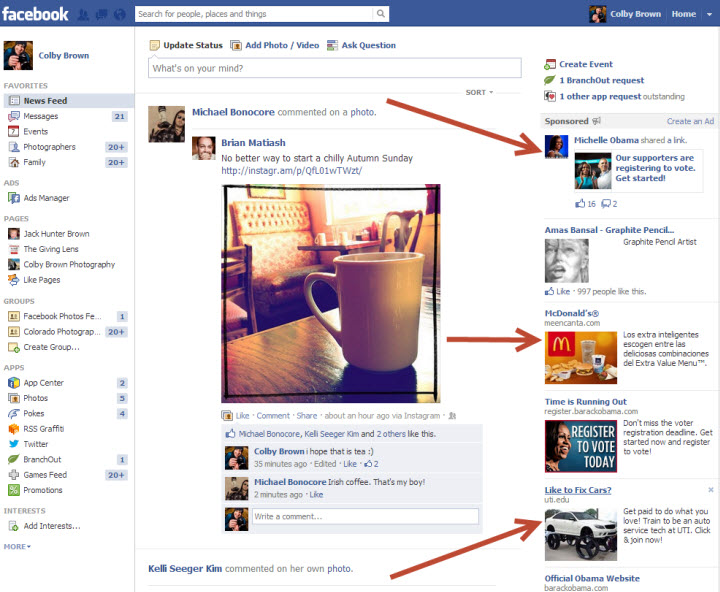
Now this information is certainly not only used for blatant advertising, but also for developing an in-depth NOISE filter. If you are confused to what a noise filter is, check out the main post of this blog series, Social Media for Photographers where I spend a considerable amount of time explaining what it is and what purpose it serves. The general idea is that Noise is any content found online that you do not want to see because it gets in the way content you are interested in. This can be in the form of spam from a stranger or something published from someone you have chosen to follow. Nearly every major social network has noise filters in place to help you weed out the content that it thinks you are not interested in. This is the reason that you will constantly miss posts on Facebook from friends even though you two are connected. In reality you will NEVER see 100% of the content published from those you are connected to online because of this. This is good to know as a photographer. If you have 500 fans on your FB page, it is more likely that only 20-30% of your fans will see your post show up in their main stream, even if every one of them where online and starring at their screen as your pressed the “post” button. We will talk more about how Facebook noise filters work a little later in the article.
The Closed Group Mentality
Ever since its inception at Harvard, Facebook has had this “closed group” mentality that has made it difficult for many photographers and businesses to gain a following. Why? Because if most users are only on the network to connect with people they already know in real life, which doesn’t leave too much room for these users to find your fan/business page and interact with the content you produce. While this is not a problem for a well known brand such as Wacom (98,377 Fans) or Nike (10,780,477 Fans), the average user has a much more difficult struggle. Think I am wrong? Start a new fan page for your photography business today and see how long it takes you to reach 1000 “fans”? In Facebook’s defense with the release of Facebook Groups and the relatively new “Subscription” model for personal profiles, you now have ways to help and alternative options respectively. We will talk more about this below.
Facebook User Base
Since we are on topic of users, lets look at some interesting statistics, courtesy of USA Today.
- Facebook recently announced that there are now over 1 billion active users on the network (October 2012)
- Facebook users equate to nearly half of the 2.5 billion Internet users world wide
- 81% of the 1 billion active users, live outside the US and Canada
- 3/5ths of the 1 billion users (600 million) are mobile users
- The average age of a Facebook user in 2012 is 22. In 2010 it was 23. In 2007 & 2008 it was 26.
- Most of the new users are coming from Brazil, India, Indonesia, Mexico and the US
- 8.7% of Facebook’s user base are actually fake/spam accounts. This = 87,000,000 users accounts are fake
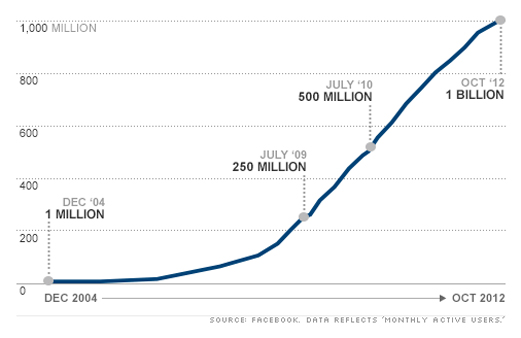
What do all of these numbers mean? It means that Facebook users base is growing exponentially but that those users are not necessarily in the US or Canada. It means that user base of Facebook is continuing to get younger and younger, with the average age of 22 as of this year (2012). It means that just as much of the rest of the internet, Facebook is putting a large emphasis on the “Mobile” movement, which is no doubt the future of the Internet itself. Which would explain why Facebook spent $1 billion USD on the purchase of Instagram, the mobile photo sharing social network.
Facebook “Friend” vs. Subscriber Model
When it comes to connecting with other uses on Facebook via a personal profile, you generally have two options. You can add someone as a “friend” or you can subscribe to their posts, assuming they have allowed this feature. Each of these choices dictate just how closely you are connected and how information is shared between two users.
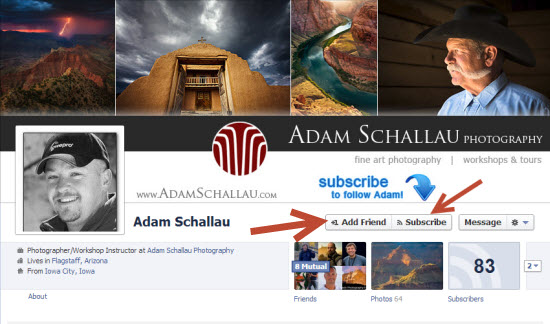
Facebook Friend
When you become someones Facebook friend, you establish a relationship that is similar to a two way street. This means that both users will from then on see each others posts in their respective main streams as well as any actions broadcasted via the Facebook ticker that is locked on the far right hand side of the screen. The ticker is where you will see action such as “Michael Bonocore listened to Lady Gaga on Spotify” or “Natalia Stone likes Chris Chabot’s photo”. This is the highest level of connection you can make on Facebook. The biggest limitation of this option is that Facebook only allows you to have 5,000 friends on the network. You can never go over that number.
Subscription Model
On September 14th, 2011 Facebook announced Subscriptions. This options allows a user to subscribe to another users public posts without having to formally become friends. This works in a similar manor as a one way street. By subscribing to another user, you are stating that you are interested in the content they have to share, but not forcing that individual to see see the content you publish. The best part of subscriptions, there is NO limit to the number of subscribers a user can have. This option works well for Internet celebrities or users that do not wish to open a brand, business or fan page, but still want to connect with a large number of users.
* To enable subscribers, click on the down arrow next to the blue “Home” bottom in the top right hand corner of Facebook. Select “Account Settings”. Then select “Subscribers” from the options on the far left of your screen. Check the bock that says “Allow Subscribers” and your are good to go.
Facebook Ad’s vs Sponsored Stories
You have two main options when it comes to advertising on Facebook, creating a sponsored ad or paying to have a sponsored story. What is the difference between the two?
Facebook Ad’s
Anyone on Facebook can create an ad to be displayed to other Facebook users. These are the same ads that you can find on the right hand side of your computer screen when logged into Facebook. An ad gives you the ability to potentially reach millions of other Facebook users that do not have to have any connection with you to begin with. Once you have decided to create an ad campaign you are given the choice to direct the ad at an internal page on Facebook or an outside URL, such as your website.
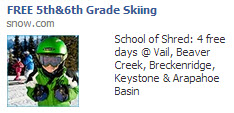
From there you are given 3 options to fill out.
- The Headline: which is meant to be the catchy title of your ad (maximum 25 characters)
- The Text: The body of your ad (maximum 90 characters)
- A single photo (100px wide by 72px tall)
You then get to choose your perspective audience for the ad based on a number of criteria that you can to select. This includes: location, age, gender, precise interests, broad categories of interest and connections (people connected or not connected with another user, page, app or event). These choices decide what your potential audience might be for your ad.
Lastly you get to decide which metric you want to use to actually set up the campaign:
- Cost per Click: Every time someone clicks on your ad, you owe Facebook a specific fee, usually between $.25 up to a few dollars
- Cost Per Impression: An impression is simply the number of people that will see your ad. For Facebook Ads, this is based on multiples of 1,000
Sponsored Stories
Unlike a Facebook ad, a sponsored story’s only purpose is to allow your post to reach more of YOUR own followers and potentially those that are connected to them. That is correct. You heard me. From the statistics I have seen online and from my own studies, the average reach of any given post on Facebook is roughly around 20% – 30% of your actual followers (which is on the high end for most users), because of the noise filter. In order for you to circumvent this surprising revelation, Facebook gives you the option to pay to have your content viewed by more people that have chosen to follow you in the first place. While this may sound ridiculous at first, it actually makes perfect sense, once you have grasped the concept of noise and noise filters on social networks.
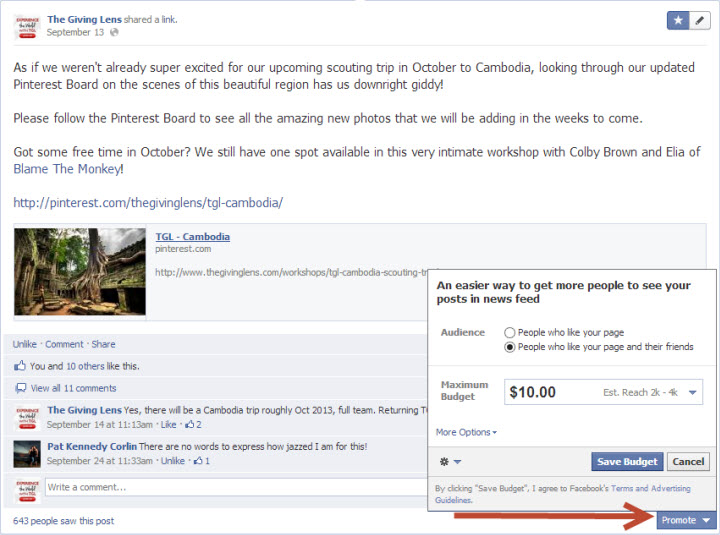
The setup is very simple and straight forward. There is a set dollar amount that you have to pay to reach a certain number of your followers or the friends of your followers. You choose the amount you are comfortable and click “Promote” and your are done. While this feature is available worldwide for Fan/business pages, it is just starting to be rolled out to those in the US and Canada that have a personal page and will eventually hit the rest of the world.
Personal Page vs Fan/Business Page
When it comes to deciding which route to take as a photographer, I feel there is a lot of miss information out there. In the tips and tricks section below, I will talk about why I choose to close down my fan page and run solely with my personal profile. Until then, lets talk about the differences between your two main options when it comes to having a presence on Facebook.
Personal Page
- Meant to represent a single person
- A Company can not have a personal page according to the Faceebook TOS (Terms of Service), it must be the name of an actual person
- Only 1 Facebook account can control a personal page
- You can connect with other users via a Facebook “Friend” or “Subscription”
- You can create a Facebook Ad (World) and a Sponsored Story (potentially coming to the US soon)
Fan/Business Page
- Can represent a person, company or organization
- You can have multiple admins help you run a fan/business page
- Users can “Like” your page, which is similar the “Subscription” model
- You can customize aspects of the Fan/Business page with Facebook apps
- You are provided with analytics/metrics to see statistics on how your page is doing (called Insights on FB), how much reach you have and how many people are engaging with you at any given time
- You can create a Facebook Ad or a Sponsored Story
Pros & Cons
While this section was published in the initial Social Media for Photographers blog post, its relevance is pretty strait forward.
The Positives:
- Facebook is the largest social network in the world in terms of users (+1 billion active users)
- More likely than not, your friends, family and co-workers are already on the network
- Facebook is working hard to improve its mobile applications
- “Subscriptions” solved the limitation problem with only being able to have 5,000 Facebook friends
- Did I mention that everyone and their mother is there already?
The Negatives:
- The vast majority of users are there to stay connected with their friends, family and co-workers.. they are typically not on FB to purchase products or engage with people they don’t know.
- The small group mentality makes it difficult to build a following.
- Facebook still has a problem with Image compression (meaning their system compress your image in ways that may make your photograph look worse than it actually is)
- Facebook has a public perception issue when it comes to privacy
- Facebook is the least liked Social Network in terms of Customer Satisfaction, ranking in at 61% (LINK)
- Facebook’s IPO has dropped over half of its value since it went public because of a lack of investor confidence in FB being able to monetize ads via its mobile applications
- Overall Interest in Facebook has dropped over the years where many users are not excited to be there any more, instead they are on the network simple because that is where their friends and family are. In the long run, this is a huge problem.
Tips & Tricks
Here are some tips and tricks to help you have a more enjoyable experience with Facebook.
Facebook’s Noise Filter and User Expectations
When it comes to trying to explain how a noise filter truly works, I find that more people just shake their head and nod without truly grasping all of the information I shared with them. Regardless, understanding how these filters work on social networks will give you a leg up on your competition when it comes to getting your content seen by the most amount of people possible. Before I go further, let me be up front. Facebook’s algorithms for dealing with noise are super secret. Everything I have learned has been from calculated observations, tests and talking to other photographers that found similar results. Take this information with a grain of salt, but do know that myself and many other professional photographers base their entire Facebook social media strategy on these concepts.
The first and most important thing to understand when it comes understanding the noise filter on Facebook is that not all content is valued equal. As we discussed in my initial post on this topic, Social Media for Photographers, each of the major social networks are trying to understand how we digitally interact in order to figure out what we are interested and who we trust online. They use this information to both provide us with effective advertising as well as to help their own noise filters showcase our content to the % of followers of ours that it feels might be interested in what we are sharing. So for example, if Joe Facebook interacts with a lot of my content that has to do with traveling to Iceland, there is a higher chance that he will continue to see my content on that subject as I share more of it down the line. This is one of the reasons that you might find the same “fans” or “friends” engaging with your content…because that trust has already been established. With me so far?
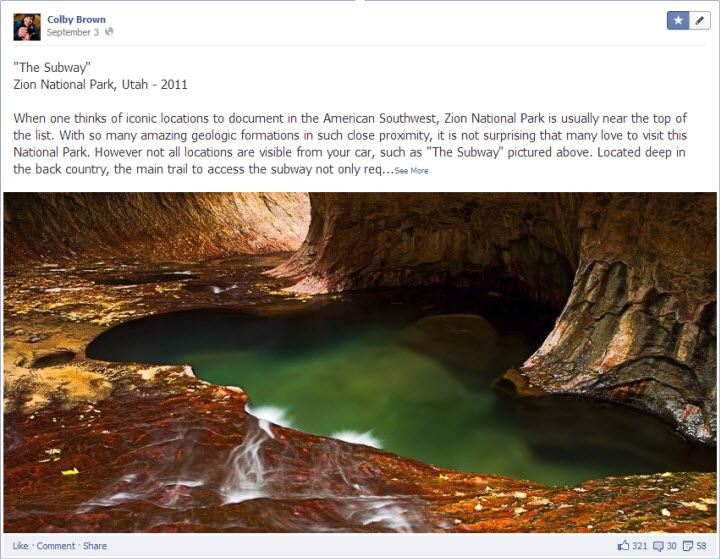
While I initially thought that Facebooks algorithm was valuing the sources of content different, the reality is that this is actually being done by Facebook users on their own (confirmed by FB itself). What I mean by this is that there are numerous ways to share content on Facebook. You can upload it directly to Facebook, Share a URL hyperlink, publish via a 3rd party application (like Instagram or Twitter) and pull in RSS feeds (via Network Blogs or other applications). Each of these sources has a different value to the average user, understandably. Over a 6 month span, I found that I had much more interaction on content shared directly to Facebook, then if I used one of these other sources. When I asked around, I found a similar story. Here is the order that I found with 1 being the highest value…
- Direct Upload
- 3rd Party Applications (Instagram and the like that publish directly to FB but through their own app)
- URL Hyperlink
- RSS Feed (Used by Networked Blogs and other FB Apps)
This means that if I want to make sure that the largest # of my followers interact with my content, I want to upload it directly to Facebook. 3rd party applications are in a pretty close second with options such as Instagram uploading your photo for you to Facebook as yup upload it to Instagram itself, but some of the stats were all over the place. I did however notice much lower participation when you linked up your Twitter account, instead of posting text or a photo right to Facebook. This could however also be effected by twitter pulling in a “tweet” of only text, as visual posts always get more interaction by those that see it. RSS feeds came in dead last. If you are using Networked Blogs to pull in the RSS feed from your blog to Facebook, I would recommend you reconsider. Do an experiment. Let your RSS feed pull in your next blog to the network and see how it does. A few days later, post a photo from that post and upload the text to Facebook and then compare. In my tests, RSS feeds are getting massively devalued in the noise filter on Facebook.
Lastly and arguably the most important, is that Facebook is valuing which account it is coming from. One of the biggest reasons I closed down my Fan/Business page and ran solely with my personal page for Colby Brown Photography is that I found Facebook valuing content from personal pages much more significantly then on my business page. I would post a photo on my business page and then do the same on my personal page and the difference were surprising. When it came to my fan page, I found that my “reach” was roughly 10%-20% of my actual fans. With my personal page, it seemed to be between 25%-40% (This doesn’t take into account Subscribers just yet). A recent article on Edge Rank Checker talks about how the reach of business pages has dropped fairly significantly over the past 6 months, from an average of 26% to 19.5%. This company helps oversee over 200,000 pages and 3 billion fans according to their own data. I have even heard of a few photographers say their reach has dropped to less then 10% over the last 2 months as well. These changes happen to coincide with the promotion of “promoted posts” where you can pay to have your post reach more followers. Coincidence…maybe…
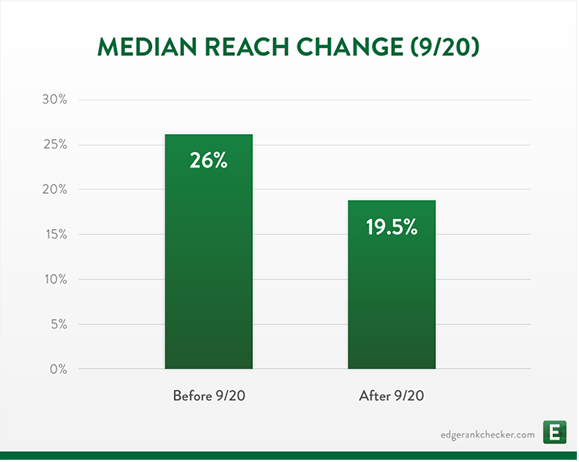
Seeing these statistics, it was obvious that I had to make a change. You no longer see a Colby Brown Photography business page…everything I do for my main company is now run through my personal page. For one of my other humanitarian focused photography companies, The Giving Lens, I sill have a business page open. Why? Because I have multiple employees that I need to help run the page and since it is a separate entity from my Colby Brown Photography. In order to follow the rules of Facebook’s TOS, the TGL page is still open and active.
The Power of the Cover Image
While many Facebook users did not like it when the network moved to their new look back in 2011, I was actually a big fan. In particular it was the Cover Image feature that I enjoyed. This is the large graphic area that sits at the top of your personal or business page. It is ultimately the FIRST thing anyone will view when the visit your page directly and therefor, needs to be eye grabbing. I have seen way too many talented photographers pup up an image that is either just plain ugly or of such low resolution that it looks pixelated. Take the time to great a unique and cover image or in the very least, make sure its visually stunning.
Elia Locardi’s cover image below is a perfect example of how to make the most out of the space Facebook has given you to be creative.
Encourage Likes
One of the best things about a Facebook “like” is that it is published for all of your friends to see on the network itself via the “ticker” on the right hand side of your screen. This helps to promote interaction and sharing. Occasionally I can see when one of my friends has like another photograph or a website. If the time catches me right, I sometimes will click through the like in the ticker and see what they were looking at. This is the kind of mentality you want to promote when publish content on Facebook.
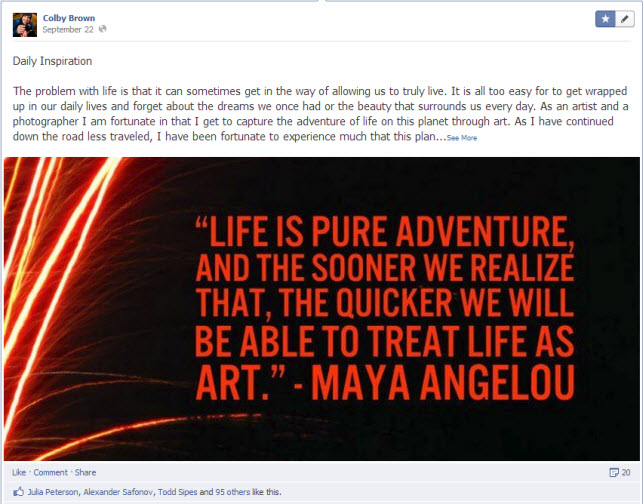
One of the best ways to do this is to make sure your posts are very visual. The human species LOVE visual eye candy. Too often I see photographers or other casual users just sharing text. Regardless how prolific the context of theirs words might be, many people look past the posts because it never grabbed their attention from the start. Try to include a graphic of some kind with everything you publish…you might be surprised at how much it can potentially help you spur further interaction.
What can photographers expect?
In general, Facebook is still touted as the network to be on if you are a Portrait, Wedding or Event photographer. The reason for this is that your clients make up much of the market segment on Facebook to begin with. On top of this, your clients can easily tag you while posting your amazing images, which ultimately acts as a referral to their friends and family. This is one of those situations where a closed group mentality can actually play into your favor. If however your focus is selling prints as a landscape, travel or lifestyle photographer, you might find a stiffer challenge ahead of you.. Most photographers I have talked to do sell prints via Facebook, but typically to their friends and family. If you want to break away from that core group, Facebook doesn’t make it easy. It is a challenge to “get your name out there” and start your own fan/business page on Facebook, as many photographers have found. This isn’t to say that it is impossible or that a handful of photographers are doing very well on Facebook. It is simply that this is not the norm.
As for the photography community, there are certainly options with the Facebook group feature which allows you to connect and engage with other photographers based on a common bond, but I have not found these very useful. The Colorado Photographers Group for example, seems to mostly just be semi pro/professional photographers marking for their workshops or print sales. You will find a few great posts in-between but that seems to be a common occurrence through many Facebook Groups I have come across. Google+ and Flickr seem to offer better current alternatives for a “photo community” where you can find inspiration and interact with other photogs.
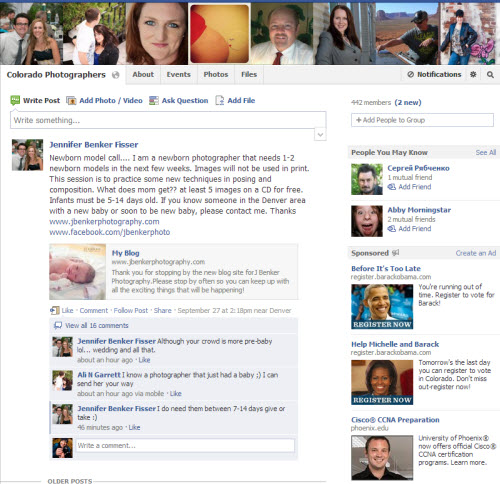
When it comes to choosing between running on your personal FB page or opening a Fan/Business page, you need to make up your own mind. From the statistics you read above, the choice was simple for me.I have not looked back after closing down the Colby Brown Photography business page and decided to run solely under my Personal page with the subscription model.
Ultimately, if you already have a Facebook account, you might as well be sharing your photography work as a photographer. If you are shooting Weddings, Portraits or Events…you should probably be fairly active on Facebook regardless. For everyone else, you are most likely going to be facing an uphill battle. Over the last year, I have began to enjoy my time on Facebook much more then the past. They are continuing to mark strides and making the overall experience better for photographers. If you decide that Facebook is the right place for you, connect with me HERE. I would love to hear from you.
Social Media for Photographers ebook
In Q1 of 2013 I will be releasing a new ebook titled “Social Media for Photographers”. It will not only contain all of the updated information in this post for that time frame, but also expand upon the idea of developing a social media strategy as well as offering in-depth tips and tricks for each of the major social networks. The book will cost around $4.99. Below is a sign up page to be notified of its launch.

